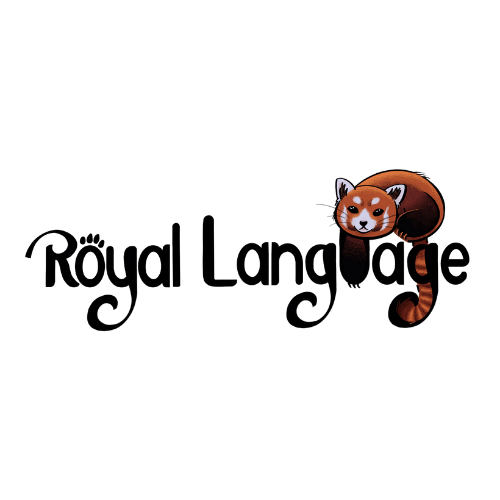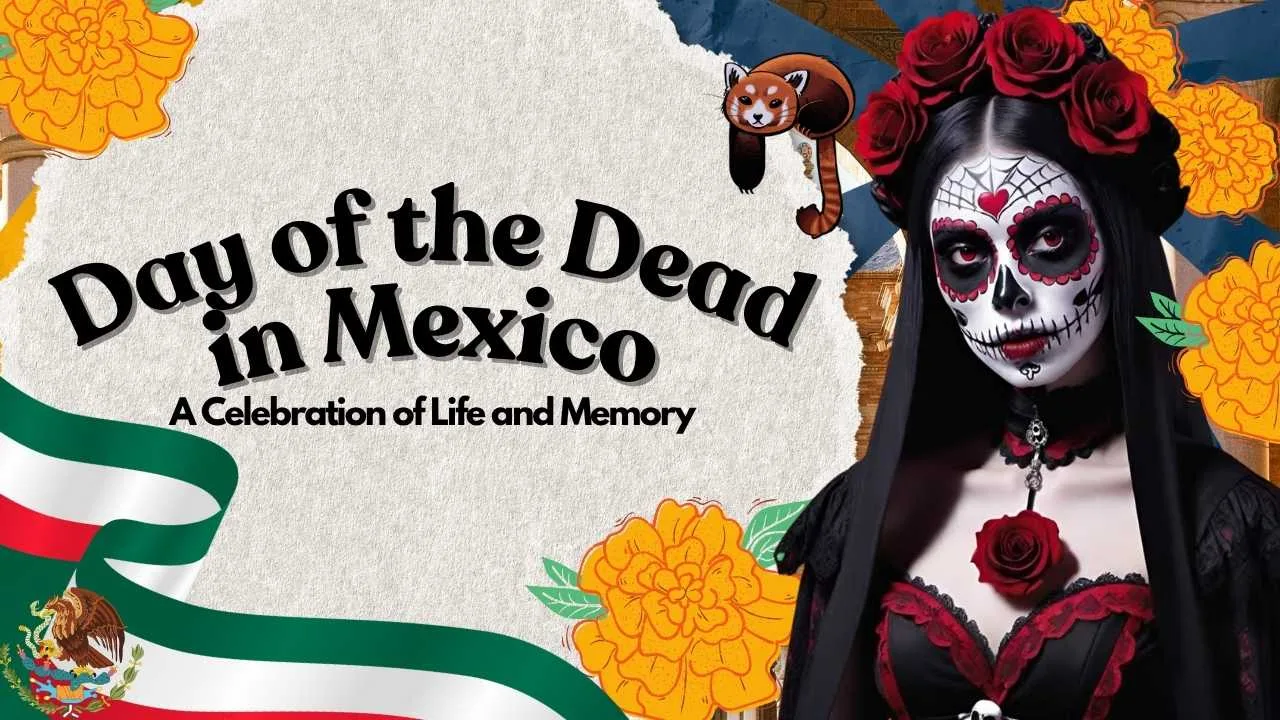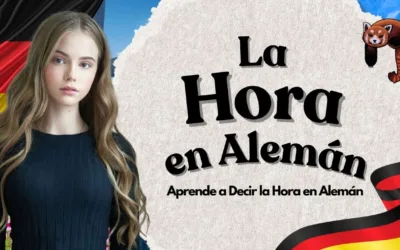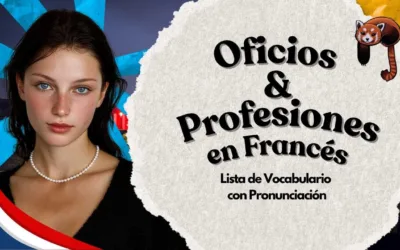🇲🇽 Day of the Dead in Mexico: A Celebration of Life and Memory
The Day of the Dead (Día de los Muertos) is one of the most fascinating and vibrant traditions in Mexican culture. Far from being a dark or frightening event, it is a heartfelt celebration of life, love, and remembrance. Every year, from October 31st to November 2nd, families across Mexico open their homes and hearts to welcome back the souls of their departed loved ones.
During these days, streets fill with bright marigold flowers, candles, and skull decorations. The smell of pan de muerto (a sweet bread made only for this time of year) mixes with the scent of copal incense, creating an atmosphere that is both sacred and joyful. Children and adults alike dress as elegant skeletons — the famous catrinas — while music, laughter, and stories fill the air.
The Day of the Dead is more than a holiday; it is a powerful expression of Mexico’s unique relationship with death. In Mexican culture, death is not seen as an end, but as a continuation — a transition to another form of existence. The celebration reflects this philosophy: instead of mourning those who are gone, people celebrate their memory, believing that love keeps them alive in spirit.
Origins of the Day of the Dead
The origins of the Day of the Dead go back thousands of years, long before the arrival of the Spanish in the Americas. In ancient Mesoamerica, civilizations such as the Aztecs, Toltecs, Mayas, Mixtecs, and Purépechas already practiced rituals dedicated to death and the afterlife. For these cultures, death was a natural and necessary part of life’s cycle, not something to fear.
They believed that when people died, their souls traveled to different destinations depending on how they had lived or died. The Aztecs, for example, believed in Mictlán, the underworld — a place where souls would embark on a long journey guided by a dog spirit. To honor and help their loved ones in this journey, families offered food, water, and personal belongings during annual ceremonies.
When the Spanish conquistadors arrived in the 16th century, they brought with them Catholic traditions, such as All Saints’ Day (November 1st) and All Souls’ Day (November 2nd). Over time, these Christian celebrations merged with indigenous beliefs, resulting in a rich cultural blend that gave birth to the modern Día de los Muertos.
This fusion preserved the indigenous respect for death and the idea of spiritual return, while incorporating Catholic symbols like crosses, candles, and prayers. What emerged was a celebration that honors the deceased not with silence, but with color, food, and music — a way to show that death can also be beautiful, familiar, and full of love.
Today, this unique mix of indigenous and European traditions makes the Day of the Dead a profound symbol of Mexican identity — a bridge between the past and the present, between the living and the dead.
🕯️ How It Is Celebrated Today
Although the Day of the Dead is celebrated throughout Mexico, each region has its own customs, foods, and rituals. What unites them all is the belief that, for a brief moment, the boundary between the living and the dead fades — and families come together again.

The Home Altar (Ofrenda)
At the heart of every celebration is the ofrenda, or altar. Families build these altars inside their homes, schools, or workplaces to welcome the spirits of their loved ones. Each level of the altar represents a layer of existence — the sky, the earth, and the underworld — and every element has symbolic meaning.
Photos of the deceased are placed in the center, surrounded by their favorite foods, drinks, and personal objects. Bright marigold flowers (cempasúchil) form paths or arches, believed to guide spirits back to the living world through their color and fragrance. Candles, incense, and sugar skulls are added as offerings of light, purity, and remembrance.
Traditional foods like tamales, mole, atole, and pan de muerto are also included, so that the spirits may enjoy the flavors they once loved. It is said that, although they do not physically eat, the spirits absorb the essence and aroma of the food.
Cemetery Visits and Night Vigils
Visiting the cemetery is one of the most emotional and spiritual aspects of the celebration. Families clean and decorate the graves of their loved ones with flowers, candles, and photos. Many bring music, food, and even blankets to spend the entire night there, sharing stories and songs.
In some towns, such as Mixquic (in Mexico City) or Janitzio (in Michoacán), these night vigils are famous for their beauty and deep symbolism. The cemeteries glow with thousands of candles, and the air fills with prayers, laughter, and the sound of guitars.
For many, it is not a night of mourning — it is a night of reunion. The living and the dead meet once more, even if only in memory.
Public Celebrations and Parades
In recent years, cities have turned the Day of the Dead into a massive cultural event. Mexico City hosts an annual Day of the Dead parade, inspired in part by the famous Catrina figure and popularized internationally after the 2015 James Bond movie Spectre.
The parade features giant floats, dancers, and skull puppets, all celebrating Mexican identity and artistry. People paint their faces with skull designs, wear colorful costumes, and participate in concerts, exhibitions, and art installations.
Each region also adds its own local touch. In Oaxaca, for example, streets are filled with sand tapestries, comparsas (musical processions), and masks. In Pátzcuaro, the lake becomes illuminated with candlelit boats that carry offerings to the island cemeteries.
Altars for Pets and Modern Traditions
Modern celebrations have expanded to include pets and animals that were once part of the family. Many families now prepare small altars for dogs, cats, and other beloved pets, placing their photos, collars, and favorite toys. This gesture reflects how the Day of the Dead continues to evolve while keeping its emotional core intact — love and remembrance.
Schools and communities also participate with creative workshops, face painting, and storytelling, teaching children to honor their ancestors and view death not as something to fear, but as something natural.
The celebration has also inspired art, cinema, and fashion worldwide — from the animated film Coco to haute couture catrina makeup — sharing Mexico’s philosophy of life and death with the world.
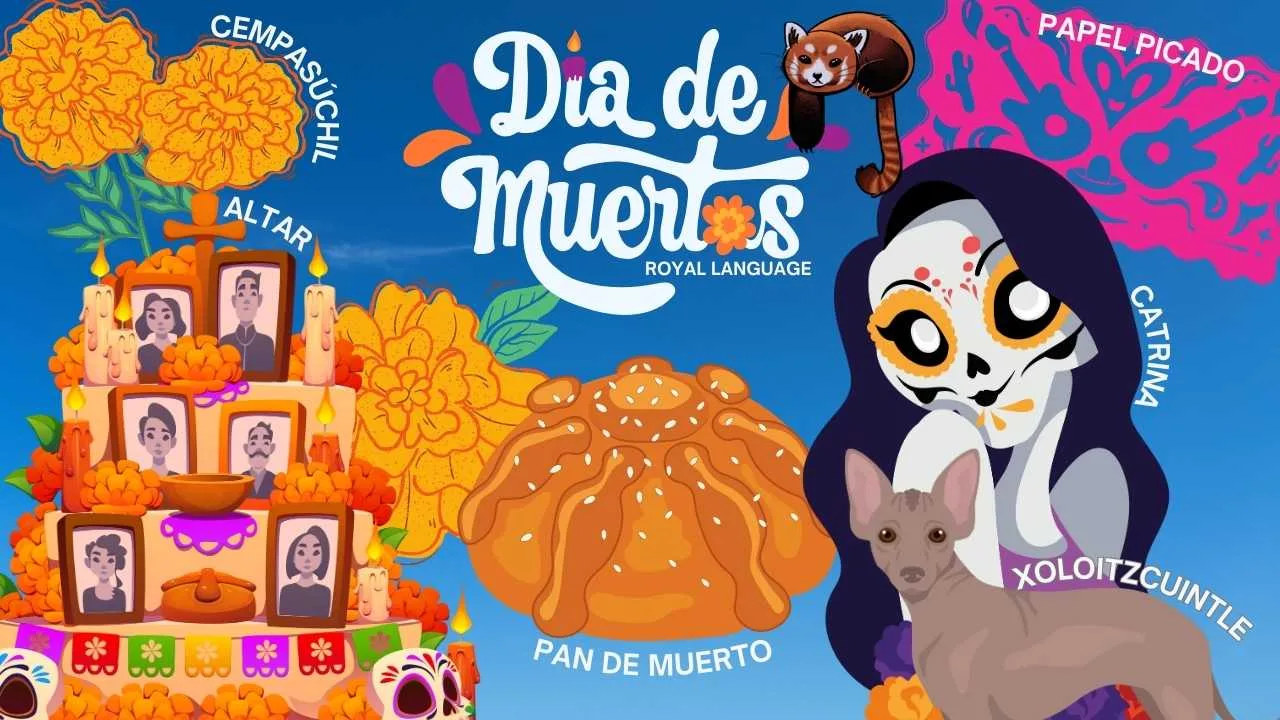
💀 Symbols and Meaning
Every element of the Day of the Dead carries deep spiritual and cultural meaning. Each color, scent, and object serves as a bridge between the living and the dead, allowing families to reconnect with their loved ones through memory, tradition, and love.
La Catrina: The Elegant Face of Death
Perhaps the most iconic symbol of the Day of the Dead is La Catrina, the elegant female skeleton dressed in a fancy hat and gown. Originally created by Mexican illustrator José Guadalupe Posada in the early 1900s and later popularized by artist Diego Rivera, La Catrina was meant as a social satire — a reminder that even the wealthy and powerful cannot escape death.
Over time, she became the graceful and joyful personification of death itself. Today, people dress up and paint their faces as Catrinas and Catrines to show that death is not to be feared but embraced as a part of life. Her presence during parades and altars represents the acceptance of mortality with elegance, humor, and dignity — a very Mexican way of laughing at death.
Cempasúchil: The Flower of the Dead
The cempasúchil flower, also known as the Mexican marigold (Tagetes erecta), is perhaps the most recognizable element of the celebration. With its intense golden-orange color and strong aroma, it is believed to guide the souls of the dead back to the world of the living.
According to Aztec legend, the cempasúchil grew from the love of two young people, Xóchitl and Huitzilin. When Huitzilin died in battle, the sun god transformed Xóchitl into this bright flower so her fragrance could lead her beloved’s spirit back to her every year.
During the celebration, petals are often scattered on the ground to create paths or trails that lead from the door to the altar. These paths, glowing like rays of sunlight, show the spirits the way home. Entire streets and cemeteries become bathed in the warm light of thousands of marigolds, symbolizing life, hope, and remembrance.
Calaveritas: Sweet Skulls of Life
The sugar skulls, or calaveritas, are one of the most playful and symbolic elements of the Day of the Dead. Made from sugar, lemon juice, and meringue powder, these colorful skulls are decorated with colored icing, sequins, and foil, often bearing the name of a departed loved one on the forehead.
Despite their macabre appearance, calaveritas represent the sweetness of life and the idea that death is not an end, but a continuation. They are both an offering and a symbol of affection — a reminder that the dead are still part of the family. In some traditions, children even receive sugar skulls with their own names, teaching them from a young age that death is a natural part of existence, not something to fear.
The Xoloitzcuintle: Guardian of the Souls
In pre-Hispanic mythology, the Xoloitzcuintle — a native Mexican hairless dog — played a crucial role in guiding the souls of the dead to the underworld, Mictlán. The Aztecs believed that these loyal dogs could help spirits cross the nine rivers that separated the land of the living from the afterlife.
Because of this ancient belief, the Xoloitzcuintle has become a beloved symbol of the Day of the Dead and a frequent figure on altars and artworks. Modern families sometimes include a photo or figurine of a Xoloitzcuintle on their altars, especially if they are honoring a beloved pet, as a spiritual companion who continues to protect their souls.
The Xolo represents loyalty, guidance, and companionship beyond death, echoing the belief that love endures even after physical life ends.
Pan de Muerto: The Bread of the Dead
The pan de muerto (bread of the dead) is one of the most cherished and symbolic foods of the celebration. This round, sweet bread is traditionally flavored with orange blossom water, anise seeds, and sugar, and topped with dough decorations shaped like bones and a teardrop at the center.
The circular shape represents the cycle of life and death, while the bone-shaped strips symbolize the deceased and the path toward spiritual renewal. The sugar dusting on top represents the sweetness of memory and the hope of reunion.
Families bake or buy pan de muerto to place it on their altars, often accompanied by a cup of hot chocolate or atole (a thick corn-based drink). It is said that the spirits “taste” the essence of this offering, while the living share it to honor and remember their ancestors — a ritual act that unites both worlds through food.
Altars: A Bridge Between Two Worlds
At the center of every Day of the Dead celebration stands the altar, or ofrenda. More than a display, the altar is a spiritual meeting place — a space where time and death lose their boundaries.
Each altar is rich with symbolism and intention. Traditionally, it is built with three or seven levels, representing the heavens, the earth, and the underworld. On each level, elements are arranged to welcome the souls and guide them home:
-
Photos of the deceased, to identify who the altar is dedicated to.
-
Candles, symbolizing light and faith, one for each soul being remembered.
-
Cempasúchil flowers, to mark the path from the entrance to the altar.
-
Incense (copal), to purify the space and help spirits find their way.
-
Food and drinks, representing hospitality and love — the essence of what the spirits miss from the living world.
-
Papel picado, colorful paper banners representing the fragility of life and the presence of air, one of the four sacred elements.
Together, these elements transform the altar into a portal of memory, where the living express gratitude, affection, and continuity. The altar is not a symbol of loss, but of reunion and celebration — a reminder that death cannot separate those who love.
🕊️ More Than a Holiday
Far from being a sad or gloomy event, the Day of the Dead is a celebration of life, identity, and cultural continuity. It reflects Mexico’s deep respect for its ancestors and its joyful approach to mortality — an attitude that fascinates people around the world.
In 2008, UNESCO declared the Day of the Dead an Intangible Cultural Heritage of Humanity, recognizing it as one of the most representative and beautiful expressions of Mexican culture.
Tags:
dia de los muertos mexico, dia de los muertos mexico 2024, dia de los muertos mexico 2025, dia de los muertos mexico 2026, dia de los muertos mexico fecha, dia de los muertos mexico donde se celebra, dia de los muertos mexico origen, dia de los muertos mexico disfraz, dia de los muertos mexico mascotas, dia de los muertos mexico animales, umanaaaco margeras medicatiao, eota conmemoradon comenze a toma, Día de Muertos fechas y significado, 10 características del Día de Muertos, Fechas de Día de Muertos 28 29 30, Cómo se celebra el Día de Muertos, Celebración del Día de Muertos resumen, Día de los Muertos Mexico en ingles, Día de Muertos origen, Origen del Día de Muertos PDF, el dia de los muertos mexico, altar dia de los muertos mexico, disfraz dia de los muertos mexico, cuando es el dia de los muertos mexico, decoracion dia de los muertos mexico, flor dia de los muertos mexico, maquillaje dia de los muertos mexico, desfile dia de los muertos mexico 2024, desfile dia de los muertos mexico 2025, celebracion del dia de los muertos mexico, day of the dead, day of the dead 2024, day of the dead in spanish, Day of the dead movie, day of the dead countdown, day of the dead bloodline, day of the dead mexico, day of the dead 1985, day of the dead costume, day of the dead flowers, mexican day of the dead, origin of day of the dead, cinco de mayo day of the dead, who celebrates day of the dead, day of the dead 2008
Estudia Con Nosotros de Manera Online
Revista Virtual
Los Colores en Francés: Guía Completa con Pronunciación, Género y Ejemplos
🎨 Los colores en francés: guía completa con pronunciación, género y ejemplos Aprender los colores en francés (les couleurs) es uno de los pasos más divertidos y visuales para quien comienza a estudiar el idioma. Además de ayudarte a describir objetos, ropa, comidas o...
Como Decir la Hora en Idioma Alemán Guía con Ejemplos y Audios
🕒 Cómo decir la hora en alemán: guía completa y trucos regionales Decir la hora en alemán (die Uhrzeit 🔊 ) puede parecer sencillo al principio, pero enseguida surgen dudas: ¿por qué a veces dicen zehn Uhr zehn y otras zehn nach zehn o halb acht? 🤔 No te preocupes: en...
Profesiones y Oficios en Francés: Vocabulario, Pronunciación y Ejemplos
🧑🏫 Profesiones y oficios en francés: vocabulario, pronunciación y ejemplos 🇫🇷 Aprender el vocabulario de las profesiones en francés (les professions et les métiers en français) es una parte esencial del nivel principiante. Este tema te permitirá presentarte,...
Mantente Informado de las Últimas Noticias y Actualizaciones
Inscríbete a Nuestros Cursos Online
C️oreano - ️Francés -️ Japonés
Inglés -️ Italiano - Alemán - Chino
Ruso - Portugués - Árabe - Noruego
Únete a Nuestro Newsletter
Enteráte de nuestros nuevos artículos sobre lengua y cultura.
Síguenos
En totdas nuestras redes sociales
